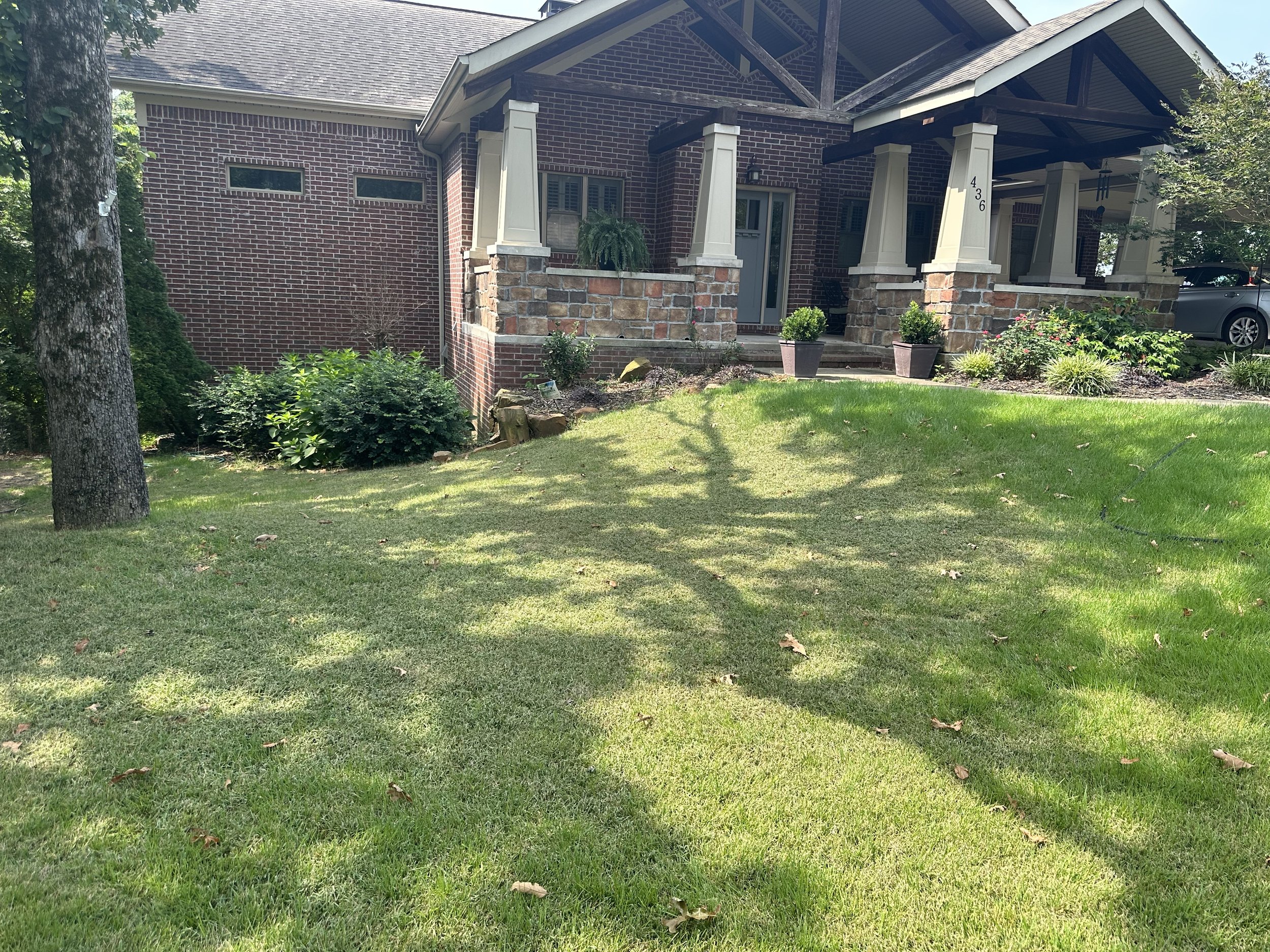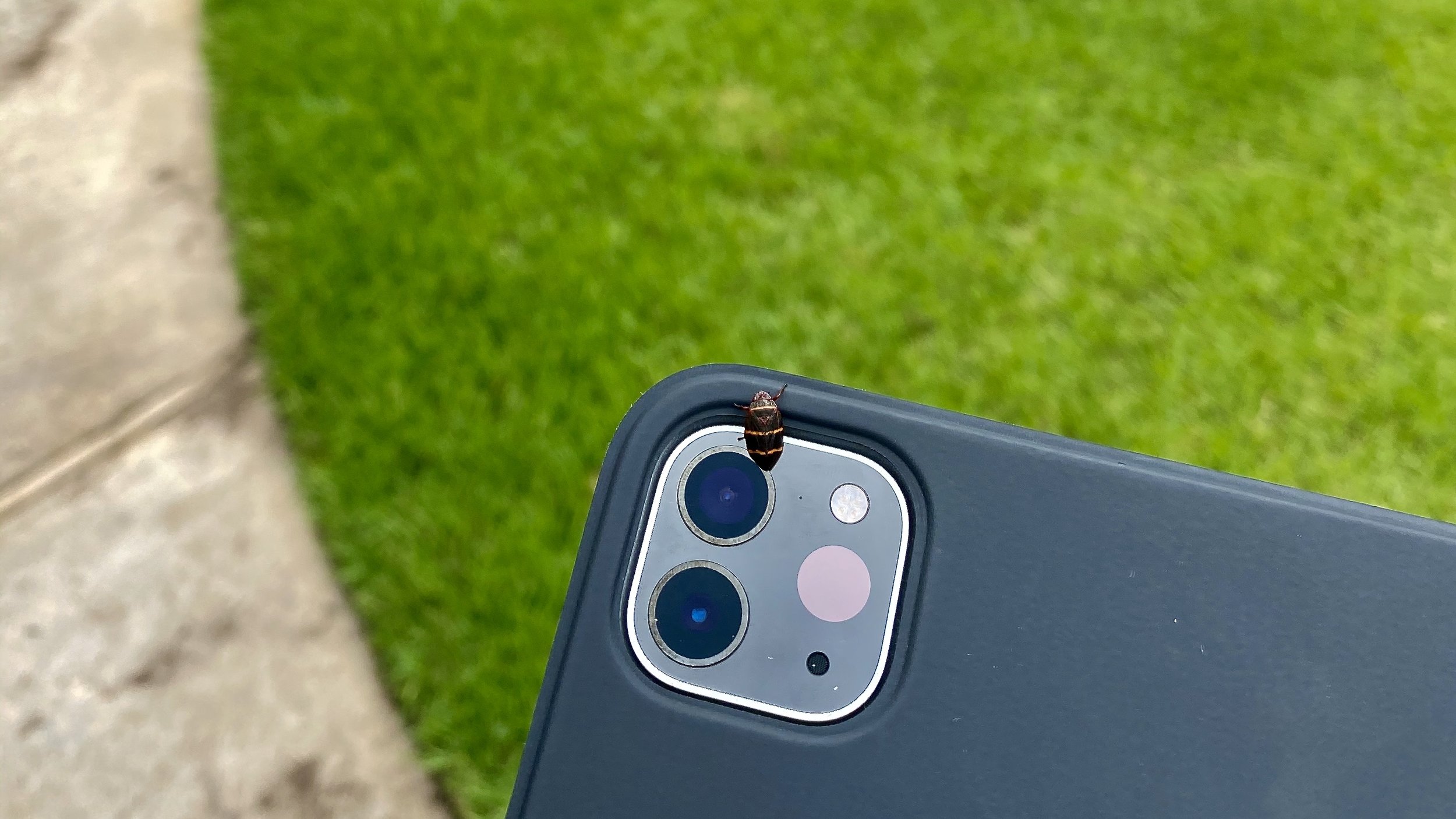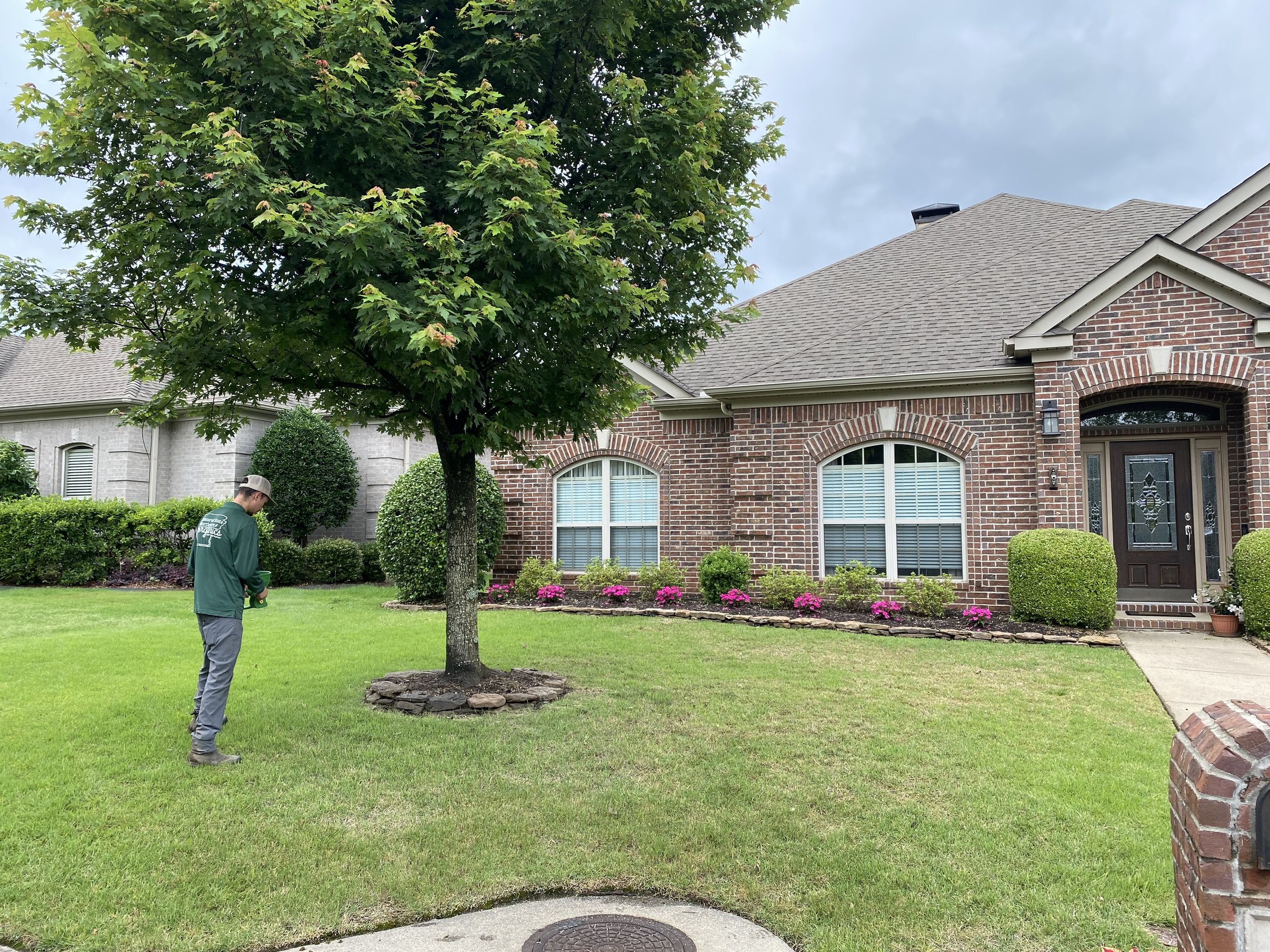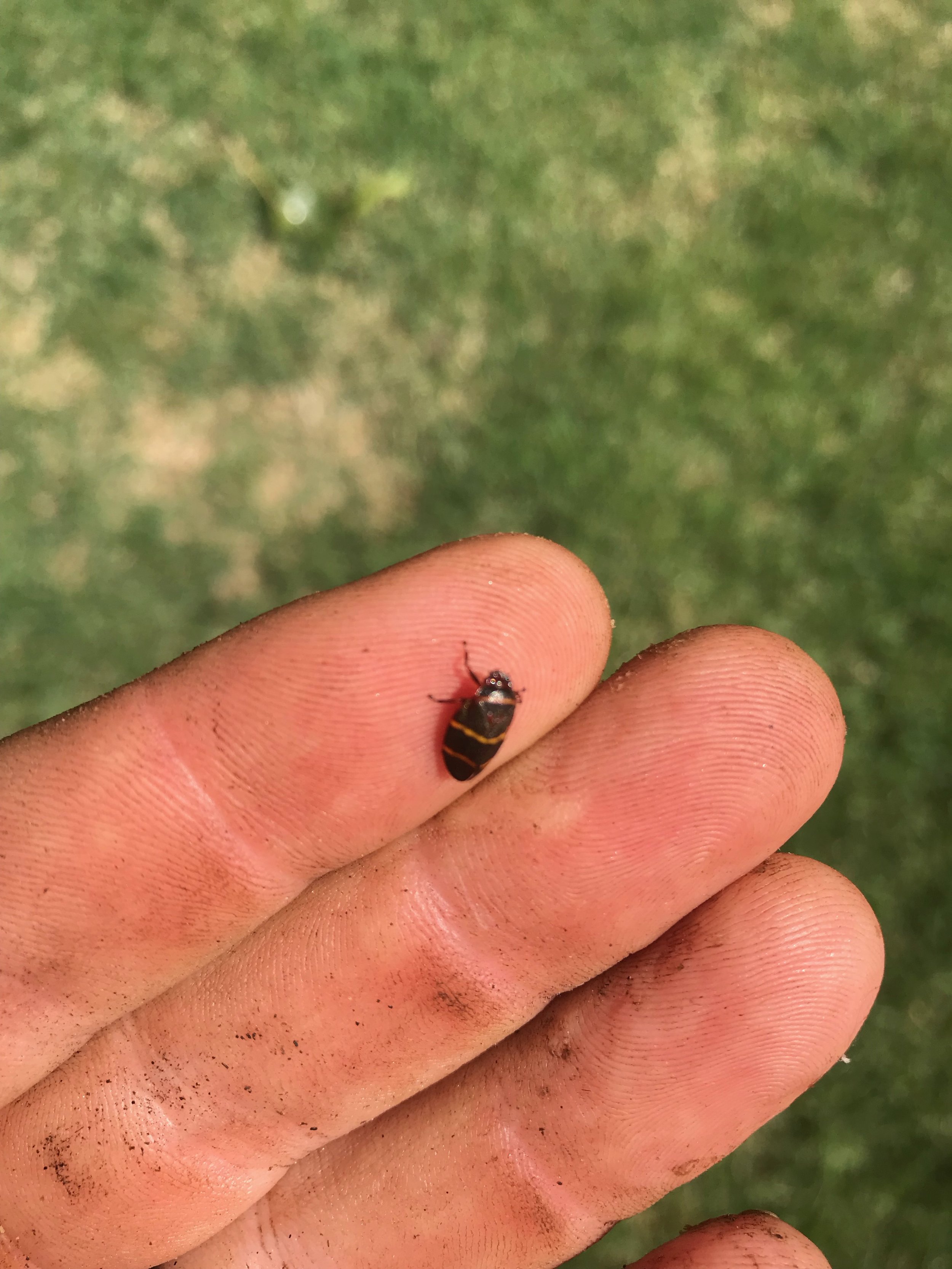Spittlebug Control




Spittlebugs are small, sap-sucking insects that belong to the family Cercopidae. They are named for the frothy, spit-like mass they produce as nymphs to protect themselves from predators and environmental conditions. These pests feed on plant sap by piercing stems and leaves, which can weaken grass and other plants.
Key Facts About Spittlebugs:
Appearance: Adult spittlebugs are small (about 1/4 inch long), often dark-colored with bright markings. The two-lined spittlebug, for example, has two orange or red stripes across its black wings.
Lifecycle: The nymphs (immature spittlebugs) create foamy white "spittle" masses around themselves while they feed.
Damage: They inject toxins into turfgrass, leading to yellowing, browning, and wilting. Severe infestations can cause grass death.
Preferred Turf: Zoysiagrass and Centipedegrass are particularly susceptible.
Contributing Factors: Excessive thatch buildup and frequent summer rains create ideal conditions for their populations to grow.
If left untreated, spittlebugs can cause extensive damage to lawns, making prevention and early detection crucial.
How We Treat Spittlebugs: Prevention & Control
Spittlebugs are a serious threat to lawns, especially Zoysia and Centipedegrass. They inject toxins into the turf, causing discoloration, wilting, and even grass death. Understanding how to prevent and treat these pests is essential for maintaining a healthy lawn.
Turf Pest Prevention
The best way to manage spittlebugs and other turf pests is through prevention. Our Turf Pest Prevention treatment, applied in April, provides season-long protection, keeping your lawn safe from spittlebugs and other damaging insects. Clients who receive this treatment are automatically covered—any necessary follow-up applications for spittlebugs or other covered pests will be made at no additional cost.
Curative Treatments: A Reactive Approach
Curative treatments are applied only after an infestation is detected. However, this method has two key drawbacks:
🛑 Damage Has Already Occurred – By the time treatment is applied, grass damage is visible, and recovery will be necessary.
⚠️ Greater Environmental Impact – Curative insecticides are generally harsher on beneficial soil biology and can pose greater risks to humans and pets.
Why Spot Treatments Are Not Recommended
Unlike some other turf pests, spittlebugs do not stay in isolated areas. They spread widely across lawns, making full-lawn treatments necessary rather than small, targeted spot treatments. Because of this, any necessary treatment will require an approved and scheduled visit.
Recognizing Spittlebug Damage
The following symptoms can identify spittlebug infestations:
🌿 Grass blades turning yellow, brown, or purple.
📏 Vertical yellow striping on the grass blades.
💀 Wilting stems and leaves, leading to turf death.
💦 Squishy, excessive spittle masses in the lawn (that look like human spit), often confused with drought stress.
Factors That Contribute to Spittlebug Infestations
Several environmental conditions can make your lawn more susceptible to spittlebugs:
🌿 Excessive Thatch – Thick thatch layers provide an ideal environment for spittlebug development. Reducing thatch buildup can help prevent chronic infestations.
🌧️ Frequent Summer Rain – Consecutive rain events in the summer create favorable conditions for spittlebug populations to thrive.
Take Action to Protect Your Lawn
Proactive prevention is the best way to safeguard your lawn from spittlebugs. If you haven't received our Turf Pest Prevention treatment, consider enrolling for next season to ensure your lawn stays protected. If you suspect an active infestation, contact us to schedule a full-lawn treatment today!
